Rosemary Karuga: Unearthing Hidden Artistic Treasures
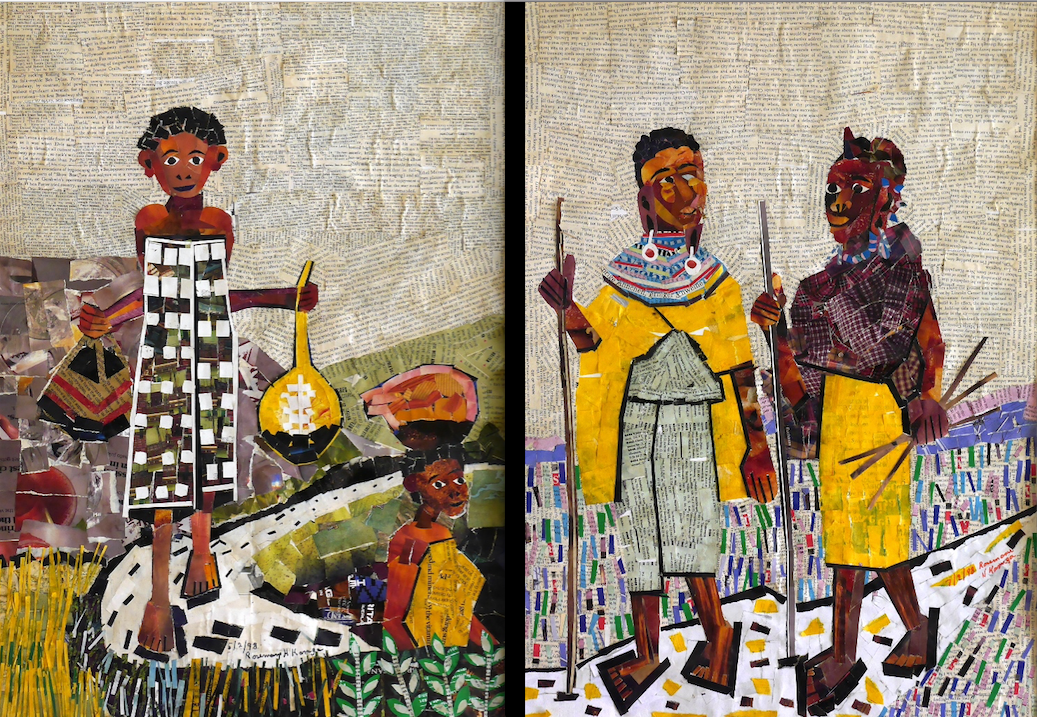
04 April 2019
Magazine C& Magazine
7 min de lecture
In our latest series – Female Pioneers – C& looks at female artists from Africa who have made major contributions to art on the continent. This time, we introduce one of the continent’s most senior artists, Rosemary Karuga. At more than 90 years of age, she is finally being recognized as one of East Africa’s finest artists – even in Ireland, where she lives since 2006.
.
Mucere ni mwega, ni uriagwo na giciko…
Ungienda kuuria? Nengereria giciko!
Ungienda kuuria! Nengeeria giciko!
(Rice be so nice – it is eaten with a spoon…
If now you want to eat some. Please hand me a spoon already!
If now you want to eat some. Please hand me a spoon already!))
– Kikuyu nursery rhyme
“If you were to write about either one of Kenya’s women artists of renown – Magdalene Odundo or Rosemary Karuga – who would you pick?” asks Jepkorir. “Easy,” I say without thinking, “Odundo, of course! “Why her?” she insists. And I start to think. “Because I can track her down by simply mining the web. Because she is, oh so there. The very Queen of England recently awarded her an OBE. She was the first-ever woman of-African descent to become chancellor of a UK University. And her sculptures, pots, and clay work – aren’t they to die for?
Rosemary Karuga, however, is in no way a lesser artist than Magdalene Odundo; she is merely less known both in Kenya and internationally. Since Odundo travelled abroad to exhibit her pots in Europe with the African heritage tour and to engage in academia, she has never looked back. In comparison, Karuga has taught at a rural Kenyan school and did not engage in art making for more than thirty years after graduating from art school. Karuga’s resilience may be attributed to the fact that she hasn’t followed the expected artistic timeline of a Kenyan artist. Born on 19 June 1928, in Meru, Rosemary Namuli Karuga’s talent was noticed by the Irish nuns at the Catholic school she attended as a young girl. She was handpicked at their recommendation to study at the School of Fine Art, Makerere University in Uganda between 1950 and 1952, where she was educated in design, painting, and sculpture. After leaving school, she became an art teacher and married in 1953. She had three children, was a subsistent peasant farmer, and also had grandchildren.
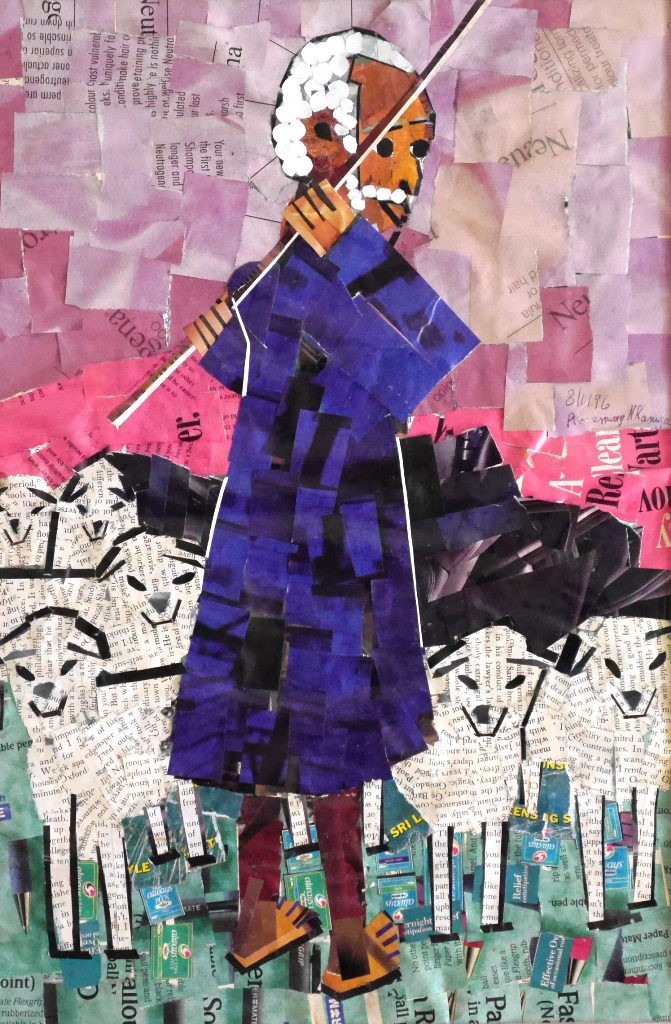
Rosemary Karuga, Untitled, 1996. 27x41cm. Courtesy Red Hill Art Gallery
By the time she retired from teaching and became a full-time artist, Karuga was sixty years old, had failing eyesight and could only hear through a hearing aid. In the late 1980s one of her daughters visited from London and encouraged her to pursue her art practice. Her daughter took her to Paa ya Paa Arts Centre where Karuga became artist-in-residence in April 1987. In October of that year, she participated in the group show Women in Art in East Africa at Paa ya Paa.
She soon became one of Gallery Watatu’s core artists and her work was shown in most of their gallery exhibitions. In 1990, Karuga exhibited alongside famous African artists El Anatsui, Tapfuma Gutsa, Bruce Onobrakpeya and Ablade Glover in the seminal exhibition Contemporary African Artists – Changing Tradition at the Studio Museum in Harlem, New York. It featured over 75 artworks by top artists from the continent, with Karuga being the only woman. 1n 1996 her collaged illustrations for Amos Tutuola’s magical fable The Palmwine Drinker were shown in Paris where she visited for one month. Shortly thereafter, her art was exhibited in London at the Commonwealth Institute.
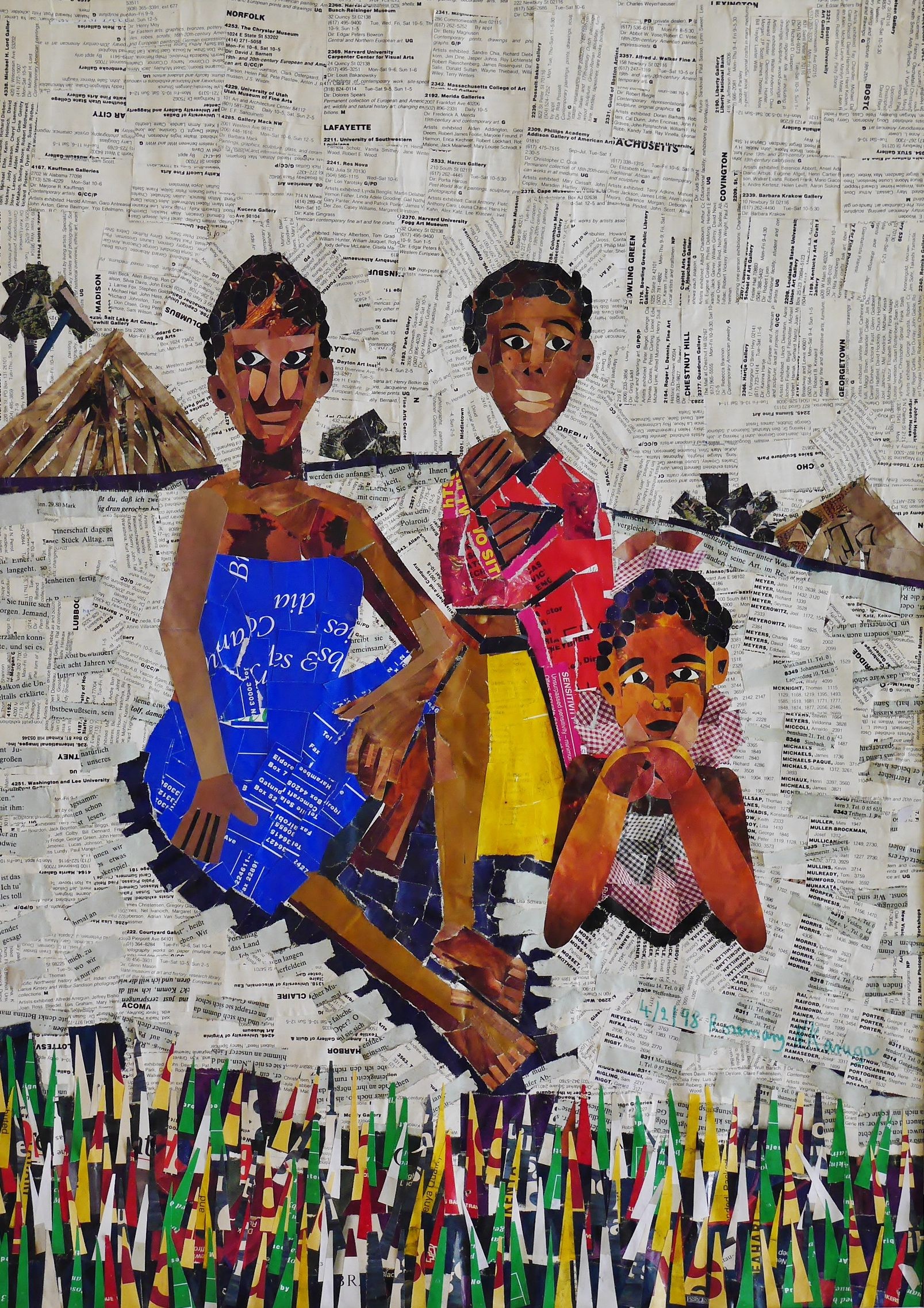
Rosemary Karuga, Untitled, 1998. 40x57cm. Courtesy Red Hill Art Gallery
At home, Karuga’s work forms part of the collections of the National Museums of Kenya, The Kenya National Archives, Murumbi Trust – African Heritage, The Watatu Foundation, Red Hill Gallery, as well as many other private collections. Due to her advanced age and failing health, she was however rarely seen at exhibition openings and art workshops. Consequently, many people in the Nairobi art scene know her work but have never met her in the flesh.
Margaretta wa Gacheru, veteran Kenyan art journalist, lists Karuga as one of nine incredible women ‘pioneer’ artists of East Africa whose impact has yet to be fully grasped but who nonetheless are forces to be reckoned with. Margaret Trowel, Joy Adamson, Robin Anderson, Yony Waite, Magdalene Odundo, Theresa Musoke, and Rosemary Karuga: they’re all artists recognized as having formidable impact and influence not least for producing beautiful work, but also for being teachers and mentors for younger artists.

Rosemary Karuga, Untitled, 1998. 27x41cm. Courtesy Red Hill Art Gallery
Karuga is a significant link between the past and future of women artists in East Africa today. She is also a respected innovator who dared to branch out and break new ground with her art, hence paving new pathways for others. Using the easily accessible material of newspapers and magazines, Karuga has over the years developed an approach to collage that at the time was unique in East Africa. Her images harness both extraordinary detail and charming simplicity.
I will never forget Karuga’s description of how a lion comes alive in her collages. First she makes a forest from the colors that she has cut up for that day. Then, from among the trees and the thicket, a lion slowly emerges and she follows it with glue and cut-up paper until it is as real a lion as one would encounter in a photograph or a movie. Suddenly the viewer begins to see layers of content upon a rainbow of colors with inlaid text in varying fonts and hues – many times in intelligible European languages as most times the magazines came with her daughter from Europe or from Ruth Schaeffner at Gallery Watatu. Imagining all this, the viewer can almost hear the chirping of the birds on the thorn tree and the sounds of the mother feeding her baby in the afternoon shade and lulling it to sleep. You begin to wonder at Karuga’s sometimes giant collages: How are they made in such a domestic environment? What time and patience each must take!
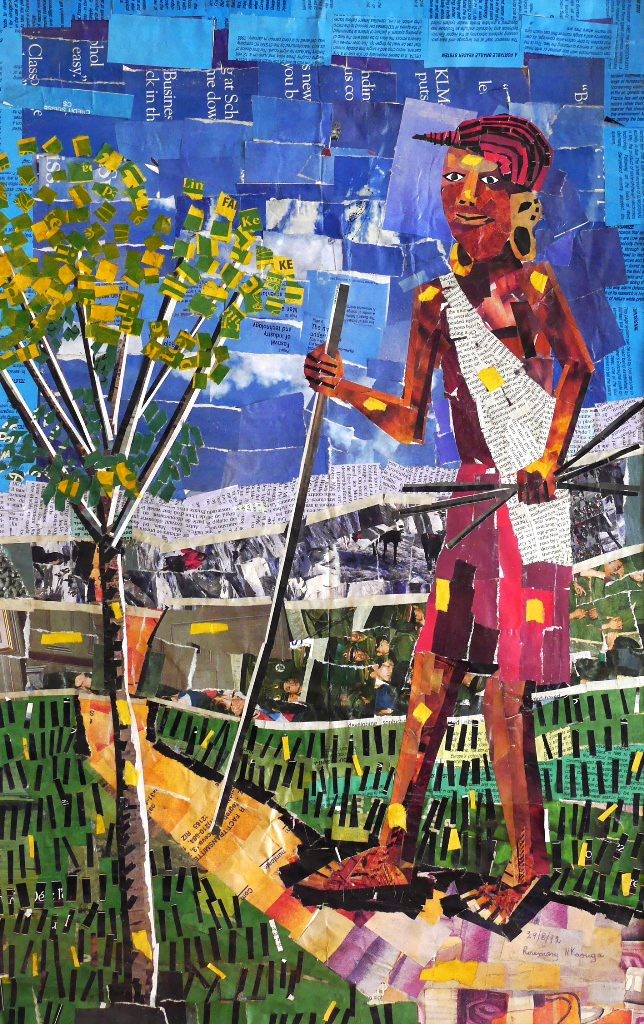
Rosemary Karuga, Untitled, 1992. 41x55cm. Courtesy Red Hill Art Gallery
Isn’t it spectacular that Karuga’s art practice has outlasted those of many old masters of the Kenyan art world? Of those from the first Watatu Gallery generation, only a handful still make art consistently. It is almost like in an animated film, the opening scene showing a giant tortoise surrounded by wildlife, big and small, fluttering and stuttering about a landscape. In the second scene, everyone has duly left, except for the tortoise. So much like in a Kivuthi Mbuno drawing. I have entertained the idea of visiting Karuga in Ireland and finding out that she has lived at the same physical address since she arrived more than a decade ago. Were she still here in Kenya, she would probably still be living in the same rented two-room mabati house in Kahawa West with her two young grandchildren. She would be at the table in the living room armed with a can of paper glue and a pair of scissors, cutting up glossy magazines and ever so slowly creating a majestic landscape.
I wrote about Karuga for the 2003 Kuona Trust book titled Thelathini. Three years later, she left Kenya to visit her family in Ireland but became seriously ill on the flight over. When she had sufficiently recovered, no airline was prepared to fly her home, forcing her to remain in Ireland. She has recently been interned at Amberly Nursing home in the small rural town of Fermoy where her daughter is an education officer. At a Dublin ceremony she has become the first East African woman to receive a lifetime award by the African Voice Newspaper; an award that celebrates Africans living in Ireland for their achievements and contributions to Irish Society. Karuga was recognized for leadership and excellence and was described as “a Kenyan Treasure”.
Mbuthia Maina is an artist, writer and curator from Nairobi, Kenya.
Plus d'articles de

L’esprit ne vient pas sans le chant
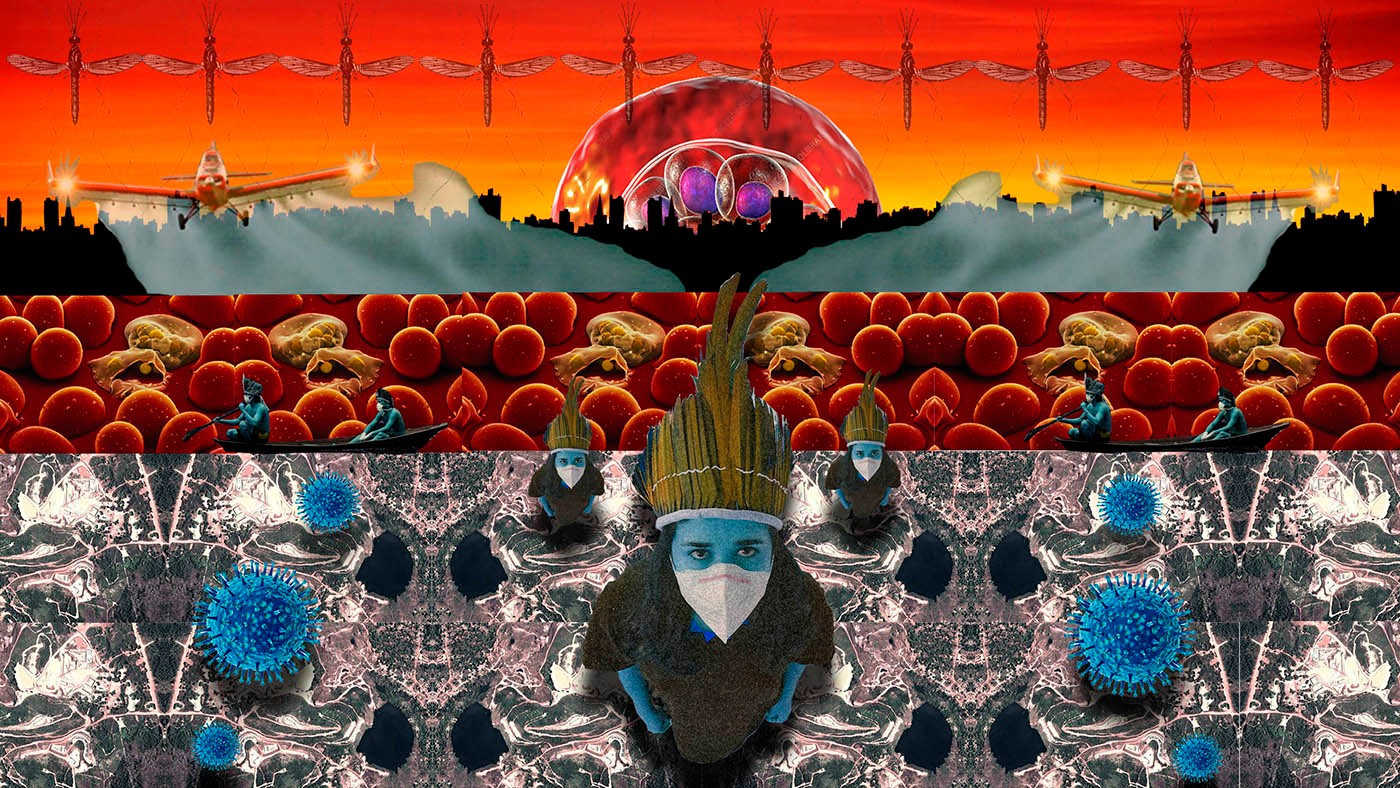
Collage as Reaffirmation of Identities
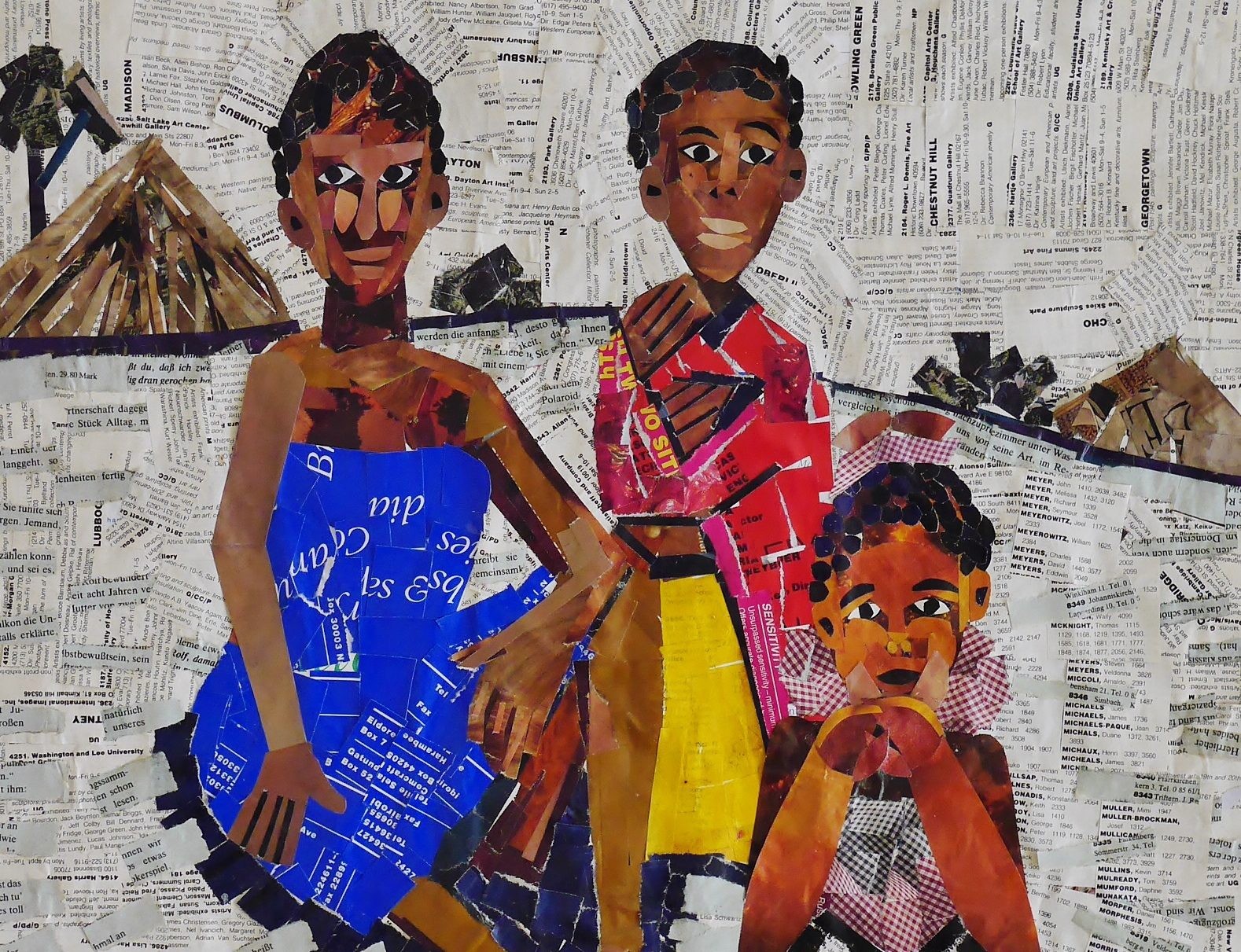
Rosemary Karuga (1928-2021)
Plus d'articles de
